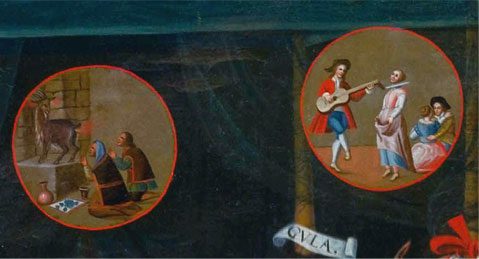- Venue
Central St Martins Kings Cross
-
Time
7pm
-
Admission
Free
- Artists
Exhibiting artist Alice Creischer and curators Andreas Siekmann and
Max Jorge Hinderer discuss their seminal exhibition The Potosi Principle on the circulation of art and wealth during Spanish colonial rule.
About the Potosí Principle exhibition
Potosí, the famous silver-mining city, synonymous with immense wealth and unbridled exploitation, was the capital of the mining industry in Latin America from the 16th to the 18th century and played a crucial role in the development of European capitalism and the migrations associated with it. Even today, the expression ‘vale un Potosí’ / ‘worth a fortune’ is commonly used in Spanish.
It marked a critical approach and another way of looking at the Bicentenario – the 200th anniversary of the independence movement in Latin America. It addresses the relationships between trade and art transfers and economic structures and ways of thinking in Latin America and Europe and their social effects on both continents, both before and after the citizens’ revolutions of the 19th century.
The ‘Andean Baroque’ works presented in The Potosí-Principle prove that cultural hegemony is a reflection not of cultural greatness, but of violence. The exhibition uses this form of painting to investigate structural similarities between the colonialism that brought forth Modernism and the current global regime of Neoliberalism. Contemporary artists respond to the baroque images with their own works. In this way, they create a link to issues still current today, such as the role of women in colonial society or the effects of the transnational soy bean monoculture on modern-day South America.
The exhibition was shown at the Museo Nacional Centro de Arte Reina Sofía in Madrid and Haus der Kulturen der Weltand in 2010, and also travelled to the Museo Nacional de Arte and the Museo Nacional de Etnografía y Folklore in La Paz.
This event is presented by Iniva in collaboration with Afterall, supported by the Goethe Institut.
Book a place
events@afterall.org
